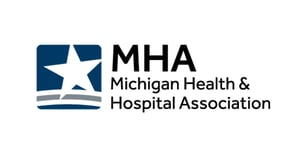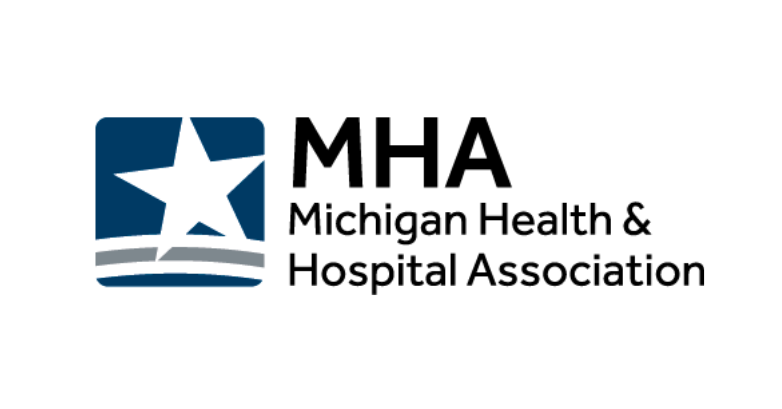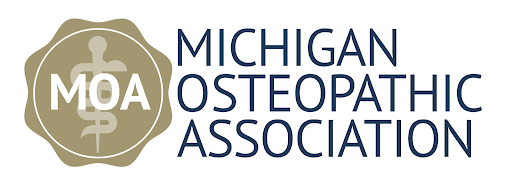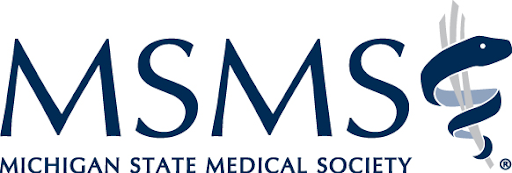
Chris Holman welcomes back CEO, of MHA, the Michigan Health & Hospital Association, Okemos, MI.
Watch Brian and Chris discuss MHA and a recent report about the strength and impact of the healthcare field on employment in Michigan in the YouTube video shared below:
In their conversation here's what Chris looked to find out about: I understand MHA recently shared a report about private sector employment and that healthcare provides Nearly 568,000 Direct Jobs, and 219,000 in Hospitals Alone - that's tremendous, tell us more!
How have those numbers been impacted by the pandemic?
Despite the losses, that's still a lot of employment, wages, and therefore creates active communities and tax base. what else does the data show?
Is there any insight in the data pointing to talent retention, or attraction going forward?
Also involved in this report were MOA, and MSMS, can you tell me about those two organizations?
Recently MHA shared a release about the topic of this interview that we share as a convenience.
Provides Nearly 568,000 Direct Jobs, 219,000 in Hospitals Alone
LANSING, Mich. — The Partnership for Michigan’s Health reports healthcare directly employed nearly 568,000 Michigan residents in 2021, demonstrating that healthcare remains the largest private-sector employer in the state despite continued staffing losses attributed to the COVID-19 pandemic.
The 2023 release of The Economic Impact of Healthcare in Michigan shows direct healthcare workers in Michigan earned nearly $46 billion that year in wages, salaries, and benefits. Hospitals alone employed 219,000 individuals in the state in 2021.
Direct healthcare employment helps create additional jobs that are indirectly related to or induced by healthcare. These indirect, healthcare-supported jobs are held by more than 470,000 people who earned about $28 billion in 2021 in wages, salaries, and benefits. Together with their employers, the more than one million workers in healthcare contributed $19.6 billion that year in local, state, and federal taxes. These taxes include Social Security, income, motor vehicle, sales, property, corporate and more.
Data from 2021 shows the impact the pandemic had on the healthcare workforce in Michigan. While direct jobs decreased by nearly 4,000 total positions, direct wages increased by 4% year-over-year as labor costs rose due to increased demand. Direct wages in hospitals increased by 6.8%, as many hospitals offered wage adjustments and bonuses to recruit and retain employees, and increased the use of contract labor with staffing agencies. A separate study conducted by the MHA in 2022 showed expenses related to contract labor and recruitment and retention bonuses increased by $516 million from 2020 to 2021. Nursing and Residential Care also experienced a similar trend, as the number of jobs in the category fell by about 8,000 but compensation remained about the same.
The increase in direct wages for hospital employees follows a national trend. A recent American Hospital Association report shows labor costs increased 20.8% between 2019 and 2022. The increase is due in large part to a greater reliance on contract staffing agencies due to staffing challenges and to meet patient demand. Increased labor expenses have a more profound impact on hospitals and health systems, as labor expenses account for more than 50% of total expenses for most hospitals. In addition, healthcare reimbursement is unable to quickly respond to inflationary pressures since rates with commercial payers are negotiated months in advance while Medicare and Medicaid rates are even slower to adjust, presenting additional financial challenges when responding to sudden labor market demand.
The loss of healthcare workers has also had a detrimental impact on physician practices. According to a survey conducted by the Michigan State Medical Society, 86% of participating physician practices experienced a decline in the number of health professionals and administrative staff employed by the practice since the start of the COVID-19 pandemic, including physician assistants, nurse practitioners, registered nurses and medical assistants. In addition, 69% reported staffing shortages led to increased wait times for patients, 55% had to reduce hours or available appointments and 43% experienced an estimated 10-25% reduction in patient revenue.
The report was compiled by the Partnership for Michigan’s Health, which consists of the Michigan Health & Hospital Association, the Michigan State Medical Society, and the Michigan Osteopathic Association, all based in the greater Lansing area. It uses 2021 data, which is the most recent available.
“Hospitals rely on many workers in a variety of clinical and non-clinical roles to operate every hour of the day, year-round.,” said Michigan Health & Hospital Association CEO Brian Peters. “This report demonstrates the significant number of people it takes to have a high-quality, functioning healthcare system available to all Michiganders.”
“Healthcare is a key driver of not only physical health, but the economic wellness of Michigan,” said Kris Nicholoff, executive director of the Michigan Osteopathic Association. “The Economic Impact of Healthcare in Michigan shows the extensive value healthcare provides to our state, both as an employer and in providing tax revenue for communities.”
"The same dynamics that are at play in our hospitals affect Michigan’s physician practices, which are also struggling to recruit and maintain physicians and ancillary staff,” said Tom George, MD, Interim Chief Executive Officer of the Michigan State Medical Society. “We encourage students to consider pursuing a profession in healthcare, which offers rewarding and stable careers across a variety of disciplines.”
Demand for healthcare careers remains high. A March survey of Michigan hospitals reported more than 27,000 current job openings, including nearly 8,500 open nursing positions, 4,500 technician openings, and 3,000 positions for clinical assistants from the 95% of the MHA membership who participated. The need for healthcare workers is not unique to hospitals, and is shared by physician practices, nursing and residential care facilities, home health services, ambulatory services, and other healthcare organizations.
The 18th edition of The Economic Impact of Healthcare in Michigan was compiled using IMPLAN® cloud software to quantify healthcare’s significant economic impact in the state. The data represents direct, indirect, and induced healthcare jobs; taxes paid by those workers and their employers; and salaries, wages, and benefits earned. The report is an online, interactive tool that allows users to examine these economic impacts from a statewide perspective and by region, county, or congressional district. It is available at www.economicimpact.org.
About the MHA:
Based in greater Lansing, the MHA is the statewide leader representing all community hospitals in Michigan. Established in 1919, the MHA represents the interests of its member hospitals and health systems in both the legislative and regulatory arenas on key issues and supports their efforts to provide quality, cost-effective, and accessible care. The MHA mission is to advance the health of individuals and communities.
About MOA:
The Michigan Osteopathic Association (MOA) is the largest statewide osteopathic organization representing osteopathic physicians, interns, residents and medical students in Michigan. Since 1898, the MOA has been dedicated to the promotion of quality patient care and to the educational, informational and legislative needs of its members.
About MSMS:
The Michigan State Medical Society is a professional association representing physicians and medical students in Michigan. Its mission is to improve the lives of physicians so they may best care for the people they serve. Please visit www.msms.org for more information.
###
» Visit MBN website: www.michiganbusinessnetwork.com/
» Subscribe to MBN’s YouTube: www.youtube.com/channel/UCqNX…
» Like MBN: www.facebook.com/mibiznetwork
» Follow MBN: twitter.com/MIBizNetwork/
» MBN Instagram: www.instagram.com/mibiznetwork/















